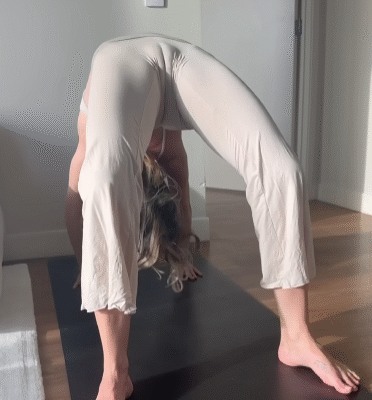
Yoga is often seen as a solitary practice—a time to tune inward, focus on breath, and cultivate mindfulness. Yet, one of the most beautiful aspects of yoga lies in its ability to bring people together, fostering connection, trust, and shared energy. Multiple group yoga poses are a wonderful way to deepen your yoga practice while bonding with others. Whether in a class, workshop, or with friends, group poses encourage communication, physical support, and collective balance.
In this article, we explore the benefits of multiple group yoga poses, share popular poses suitable for different group sizes, and provide tips to safely and joyfully practice together.
Why Practice Yoga Poses in Groups?
When we practice yoga alone, the focus is typically on self-awareness and personal growth. Group yoga, however, adds layers of interaction and cooperation. Here are some compelling reasons to try multiple group yoga poses:
1. Builds Trust and Communication
Group yoga poses require participants to rely on each other physically and mentally. Balancing on a partner, supporting weight, or coordinating movements demands clear communication and trust. This can enhance relationships off the mat as well.
2. Develops Physical Strength and Balance
Some group poses challenge the body in ways solo poses cannot. For example, partner-supported balances allow you to safely explore more advanced postures, build core strength, and improve coordination.
3. Creates a Sense of Community
Sharing movement in a group cultivates a sense of belonging. The energy generated when multiple people move in harmony is powerful, uplifting, and inspiring.
4. Encourages Mindfulness and Presence
Group poses require heightened attention to your partner’s body, breath, and alignment. This nurtures mindfulness, empathy, and a deeper connection to the present moment.
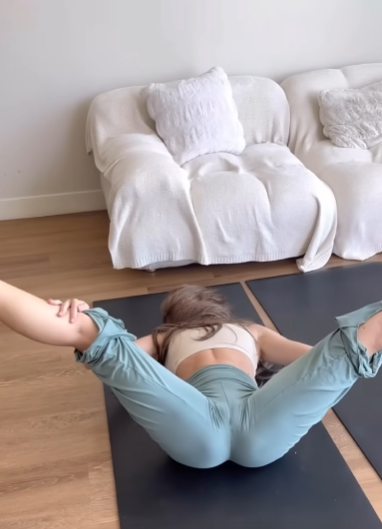
Popular Multiple Group Yoga Poses
Let’s dive into some popular and accessible group yoga poses. These can be modified for different levels and group sizes.
1. Partner Tree Pose (Vrksasana)
Group size: 2 people
Benefits: Improves balance, core strength, and focus.
How to do it:
- Stand side by side, shoulders touching.
- Each person places the sole of their inside foot against the inner thigh or calf of the standing leg, just like a traditional tree pose.
- The partners lightly press their outer arms together for support, or clasp hands for extra balance.
- Engage your core and gaze forward.
This pose promotes stability while encouraging gentle support from your partner.
2. Double Downward Dog
Group size: 2 people
Benefits: Strengthens arms, shoulders, and hamstrings; stretches the back and calves.
How to do it:
- Partner A comes into a traditional downward dog position.
- Partner B places their hands a little forward of Partner A’s hands and walks their feet toward Partner A, placing them on Partner A’s lower back or hips.
- Partner B then lifts their hips, creating a second downward dog inverted over Partner A.
This pose builds strength and trust as both partners support each other’s weight.
3. Seated Twist with Partner
Group size: 2 people
Benefits: Opens the spine and shoulders, improves digestion.
How to do it:
- Sit back-to-back with your partner, legs crossed or extended comfortably.
- Inhale, lengthen your spine; exhale, twist to the right, placing your right hand on your partner’s left knee and left hand on your own right knee.
- Hold for a few breaths, then switch sides.
This pose encourages connection and coordination of breath and movement.
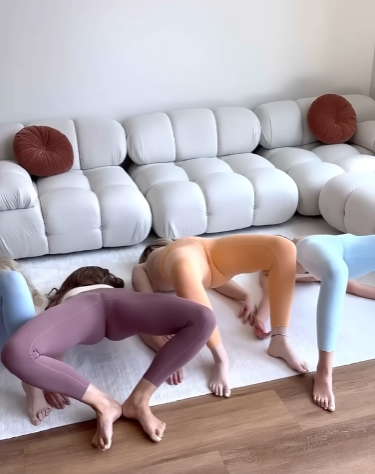
4. Group Boat Pose (Navasana)
Group size: 3 or more people
Benefits: Strengthens the core and hip flexors.
How to do it:
- Sit in a circle with your legs extended and feet touching your neighbors’ feet.
- Hold hands with the people on either side.
- Slowly lean back slightly and lift your legs to create a “V” shape, balancing on your sit bones.
- Engage your core, keep your chest lifted, and gaze forward.
This pose requires teamwork to balance and creates a sense of shared effort.
5. Human Knot
Group size: 4 or more people
Benefits: Promotes flexibility, problem-solving, and laughter.
How to do it:
- Stand in a circle, shoulder to shoulder.
- Each person reaches across the circle with their right hand to hold someone else’s right hand.
- Then repeat with the left hands, ensuring you are holding two different people’s hands.
- The group works together to untangle the “knot” without releasing hands.
While not a traditional yoga pose, this activity fosters trust, patience, and group cohesion.
6. Partner Forward Fold with Chest Opener
Group size: 2 people
Benefits: Stretches hamstrings and shoulders, improves posture.
How to do it:
- Stand facing your partner, about an arm’s length apart.
- Both bend forward at the hips, keeping your back flat.
- Reach your arms behind you and clasp your partner’s hands or wrists.
- Gently pull each other closer, opening the chest while stretching the backs of the legs.
This pose encourages mutual support and deep stretching.
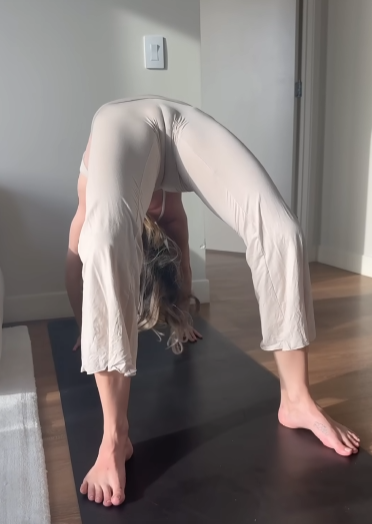
Tips for Practicing Group Yoga Poses Safely
Practicing yoga with others can be deeply rewarding but requires mindfulness to avoid injury and ensure comfort for all. Here are some important safety tips:
1. Communicate Clearly
Before and during poses, talk to your partner(s) about any discomfort or concerns. Use gentle language and body cues to communicate adjustments.
2. Warm Up Thoroughly
Prepare your muscles and joints with warm-up stretches or gentle flows. This is especially important before attempting partner or group balancing poses.
3. Respect Boundaries
Never force a pose or push someone beyond their limits. Everyone’s flexibility and strength differ, and it’s vital to honor that.
4. Use Props if Needed
Blocks, straps, or cushions can offer extra support and stability for group poses. Don’t hesitate to use them.
5. Practice Mindful Breathing
Encourage synchronized breathing to foster calm and unity. Breath awareness helps maintain balance and focus.
6. Start Slow and Build Trust
Begin with simple poses and gradually progress to more challenging ones as the group’s comfort and trust grow.
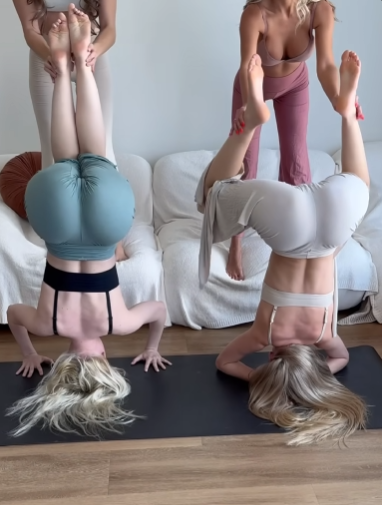
Creating Your Own Group Yoga Sessions
If you want to explore multiple group yoga poses regularly, consider organizing group sessions with friends or community members. Here are some ideas:
- Theme Classes: Plan sessions focusing on partner balance, core strength, or restorative group poses.
- Workshops: Host a workshop that introduces group poses, trust-building exercises, and partner stretches.
- Social Yoga Gatherings: Combine yoga with social time, like a picnic or tea, to deepen connections.
- Family Yoga: Encourage children and adults to participate together with fun, playful group poses.
Conclusion
Multiple group yoga poses offer a rich, joyful way to deepen your practice and your relationships. They remind us that yoga isn’t only about individual growth but also about the shared human experience. Through movement, trust, and communication, group yoga creates a supportive community where everyone can flourish physically, emotionally, and spiritually.
So gather your friends, family, or yoga class and try some group poses today. Feel the strength of connection as you move together and create moments of balance, laughter, and shared peace.
